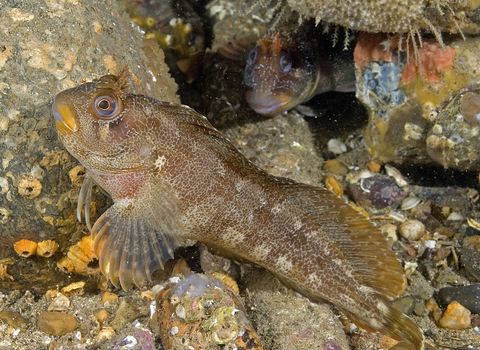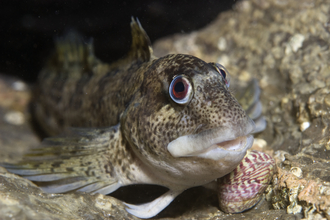
Tompot blenny ©Paul Naylor www.marinephoto.co,uk
Tompot blenny
This clown-like fish is a favourite amongst divers and snorkellers. They are inquisitive little souls and will investigate divers near their hidey-hole homes.
Scientific name
Parablennius gattorugineWhen to see
January to DecemberSpecies information
Statistics
Length: up to 30cmConservation status
Common




